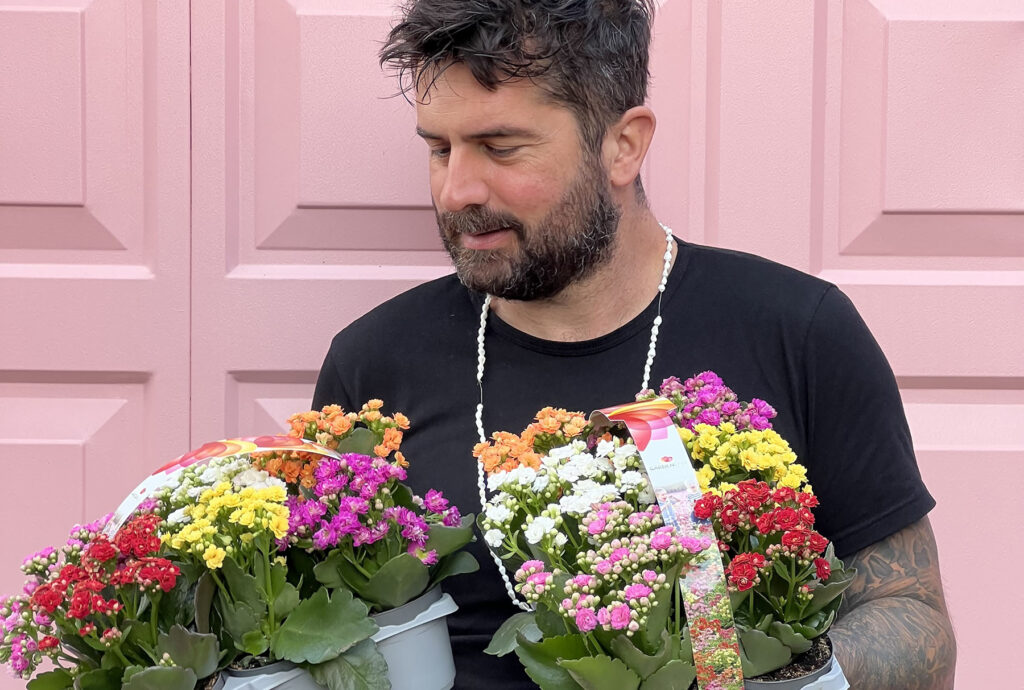With almost forty-five thousand followers on Instagram, English blogger Mr. Plant Geek is a household name. By his own admission, he has been growing plants since he was five years old. Today, he preaches his plant love through various online channels and is in the Sunday Times top 20 most influential people in the gardening world. Just to say: if there is one person we should be prying into the plant trends from, it is him.
As a curious plant hunter, I am always on the lookout for the latest in our industry. For innovative techniques in breeding and genetics, for example. But what excites me most is how we can revalue a known plant. Or even more so: how we can use it in a different way.
I admit: on a grower’s journey, I am often the louse in the fur. I’m the one asking 101 questions, peeking through every greenhouse door and commenting on exclusive plants, varieties that are probably still top secret. But I love learning, getting a feel for what is being developed, and then feeding that back to what consumers are looking for.
I have been around the industry for a long time and by now have a broad knowledge of European/global breeding companies. In addition, I can fall back on my many European PR contacts and – most importantly – a following of loyal plant enthusiasts on social media and the internet. In short, a privileged position to connect different sectors. And in both directions: the market knows what the consumer wants. Conversely, the consumer sees what the future holds.
So I feel honoured that Floréac has asked me to share my views on current and emerging trends in our sector. So I take out my crystal ball and predict five striking trends.
Plants with a purpose
Consumers are becoming smarter and more critical. The impact on the environment is well documented today and will continue to be so. Consumers are looking for ways to make a difference.
So we need to think more about the ‘usefulness’ of a plant. Is it good for pollination? Does it provide a food source, both for us and another part of the food chain? And what about carbon uptake? All things we need to analyse. More so. Why not add ratings to plant labels? Just like an eco-label on, say, a fridge. Worth considering, right?
A reflection. If you do this, you question the usefulness of ornamental plants. Although, these plants are more than eye candy. They are indeed needed by wildlife and/or pollinators. Personally, I don’t hope the end of double-flowered plants is near. But as part of a ‘balanced garden,’ they should still be possible. So, let’s keep hoping, even though the market might shrink.
Opt for better ground covers
The previous trend, plants with a purpose, dovetails perfectly with the trend of opting for better ground cover. Besides, it could also mean a new direction for breeding programmes, measuring pollen and nectar production.
I always find it curious that new Primulas like ‘Everest’ produce hundreds more flowers, and hence nectar and pollen, than the wild forms. And yet consumers often prefer plants growing in the wild. In this case, which plant is better for bees?
I have already talked about balance when choosing plants, but I think this also applies to plant composition. Last year, I experimented with some summer patio containers, combining ‘proud bedding plants’ with more subdued perennials and hardy foliage plants. The result was super stylish. The main components of the outdoor pot, Heuchera, Hosta and so on, could then easily be reused in the second season.
So will bedding plants look different in the future? Can a bedding plant also be something that is durable and survives the seasons? Step forward, long-flowering plants like Alstroemeria and Penstemons – your time has come!
Flexible planting
As you can see: I am obsessed with categorising plants. Or rather, by eliminating them! I always look for consumers with a sense of adventure. Those who put a ‘houseplant’ in an outdoor container, mixed with petunias. Should be possible.
For this, I draw inspiration from a method I learnt in Japan a few years ago: the Barakura style. A very avant-garde approach that opens up a lot of possibilities. Basically, it comes down to flower arranging on a small scale. Because you fill a pot or container as wildly and lushly as you would a mixed bouquet. Different kinds of potted plants close together, that creates sparks in a planter. And best of all, throughout the seasons you can vary: if a plant is outgrown or too big, just replace it.
The most obvious category to experiment with are houseplants. But actually, these plants were not bred to grow in homes. They only really flourish in fresh air. My tip: go for tropical plants mixed with the classics.

New dimension for houseplants
Not everyone has a garden or a terrace. You can solve that by hanging flower boxes on your window. Even though I am a fan of this, I keep hoping for a universal fit that fits every window. So far, that remains a fable.
Houseplants remain an evergreen, a trend that will never blow over. They are soothing, beautify your interior and boost your body and mind. However, one point of attention: if the assortment narrows and the prices of rare plants skyrocket, consumers will drop out.
All spotlight on flowering houseplants, a category previously considered cheap. Now is the time to shine. Consider the Kalanchoe that blooms for 100 days (indoors or outdoors), the new generation of Phalaenopsis orchids, which are now fragrant too, the exuberantly exotic Bromeliads and the colourful Chrysanthemums. Let them bring colour and joy into your home, much more than an Alocasia …
Embrace the colour carnival
Time for my latest trend, that of cheerful nonchalance. Consumers just want COLOUR! Bold colours, bright colours, and remember: they don’t give a damn about the Pantone colour of the year. So it’s up to us to inspire them and make sure they make the right choices, keeping in mind my tips above.
Because while it is good to choose plants that provide an instant feel-good feeling, it is even better to go for a plant with a sustainable purpose. That is the path we need to show our consumers. We need to educate them with the correct information, and most importantly, excite them with the right trends.
Soit, time to browse my greenhouse again.
